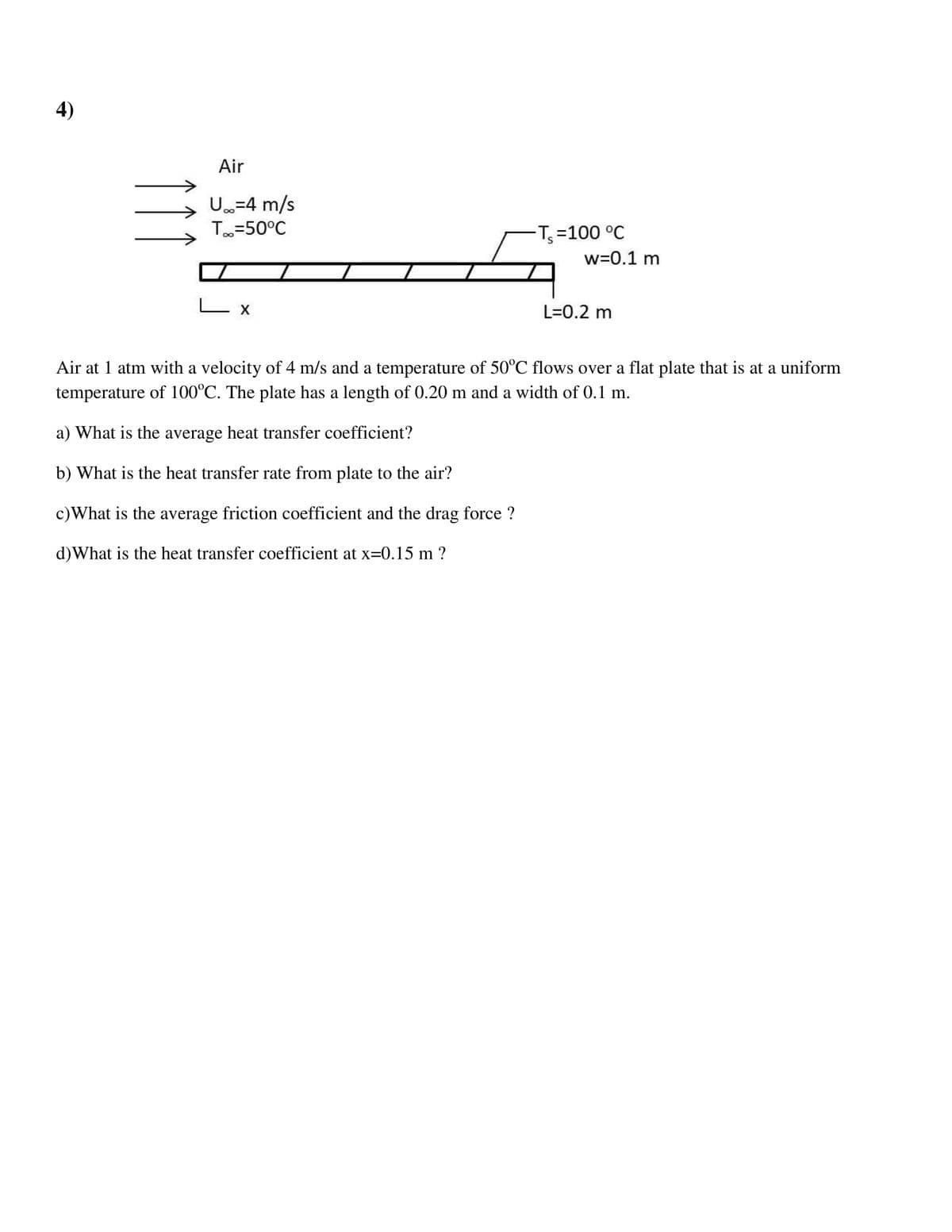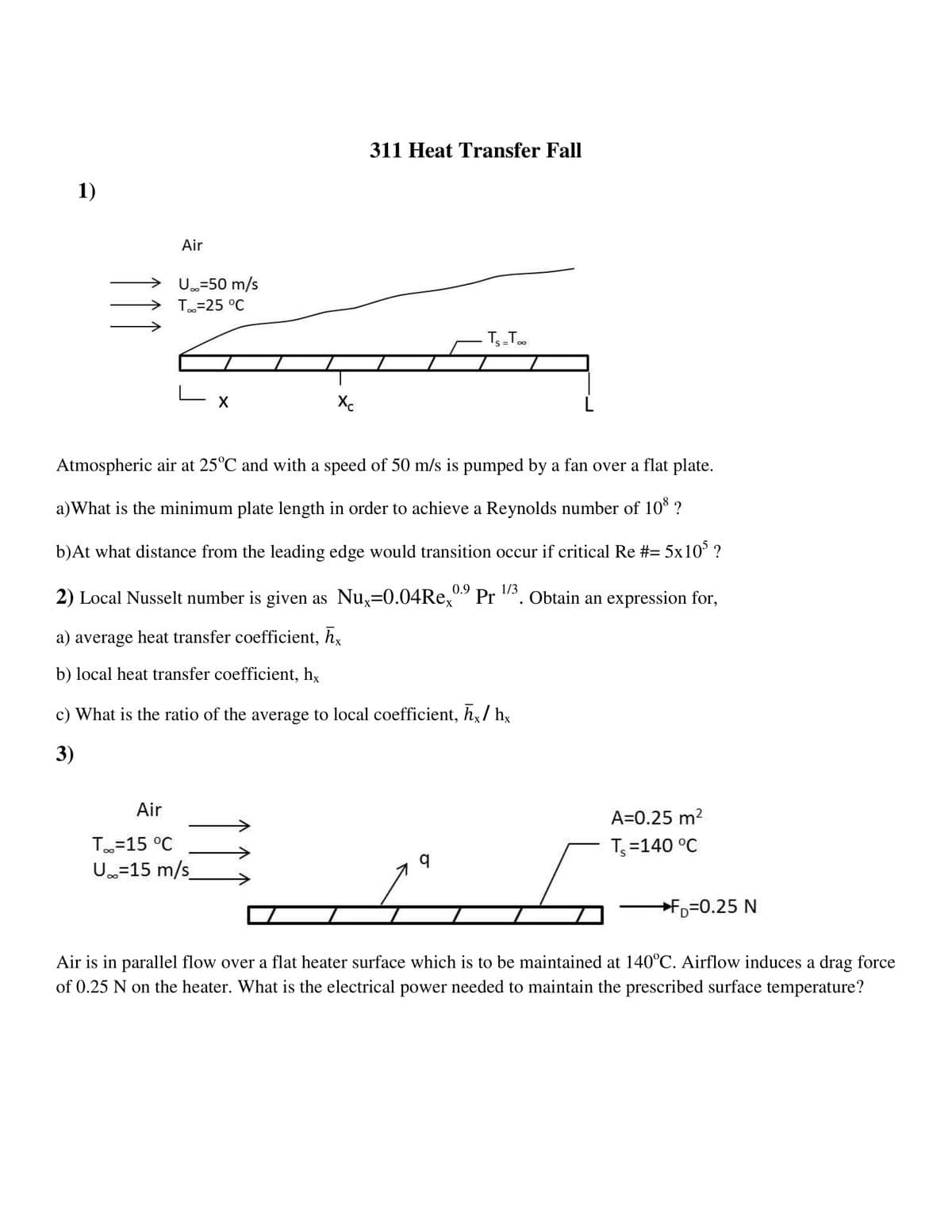Atmospheric air at 25oC and with a speed of 50 m/s is pumped by a fan over a flat plate. a)What is the minimum plate length in order to achieve a Reynolds number of 108 ? b)At what distance from the leading edge would transition occur if critical Re #= 5x105 ?
1)
Atmospheric air at 25oC and with a speed of 50 m/s is pumped by a fan over a flat plate.
a)What is the minimum plate length in order to achieve a Reynolds number of 108 ?
b)At what distance from the leading edge would transition occur if critical Re #= 5x105 ?
2) Local Nusselt number is given as Nux=0.04Rex0.9 Pr 1/3. Obtain an expression for,
- a) average heat transfer coefficient, x
- b) local heat transfer coefficient, hx
- c) What is the ratio of the average to local coefficient, x / hx
3)
Air is in parallel flow over a flat heater surface which is to be maintained at 140oC. Airflow induces a drag force of 0.25 N on the heater. What is the electrical power needed to maintain the prescribed surface temperature?
4)
Air at 1 atm with a velocity of 4 m/s and a temperature of 50oC flows over a flat plate that is at a uniform temperature of 100oC. The plate has a length of 0.20 m and a width of 0.1 m.
- a) What is the average heat transfer coefficient?
- b) What is the heat transfer rate from plate to the air?
c)What is the average friction coefficient and the drag force ?
d)What is the heat transfer coefficient at x=0.15 m ?


Trending now
This is a popular solution!
Step by step
Solved in 3 steps


